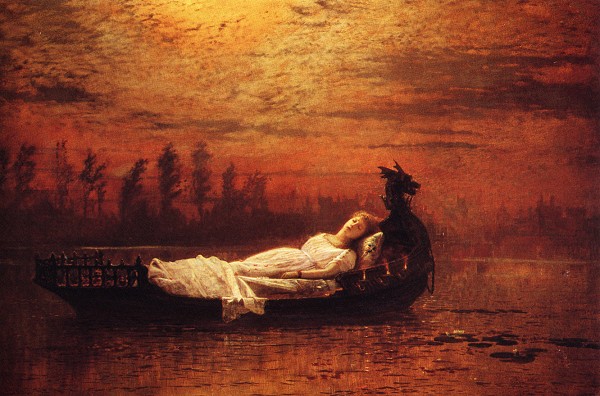
There is a heavy emphasis on the visual in this opening section yet the Lady herself is never seen, secluded and denied access to the world, the ‘shallop flitteth’ by ‘unhail’d’ and nobody has seen her ‘wave her hand’ or ‘at the casement seen her stand’. However, this offers no comfort to the frustrated central figure of the poem who must remain in solitary confinement while outside there is movement and freedom. This suggest imprisonment rather than protection, and yet these walls overlook ‘a space of flowers’ and the island itself ‘imbowers’ her, indicating safety and security. The Lady lives in a castle synechdochally described as ‘Four gray walls, and four gray towers’. Part 1 established the setting, using mellifluous figurative language to describe the pastoral Camelot which is juxtaposed against the dreary stasis of the ‘Island of Shalott’ to create an overall negative effect. She leaves the tower and as she floats down to Camelot in a boat, sings her last song and dies. The appearance of Lancelot prompts her to turn and look directly upon the world. The Lady of Shalott is cursed to stay in her tower, weaving the sights she sees through an enchanted mirror.


This is an examination of ‘The Lady of Shalott’ written by Tennyson in 1842. Over here is where you can continue reading my analysis. Over here is where you can read the poem and……… This poem is the longest so far and there’s a lot to say about it so let’s get started.


 0 kommentar(er)
0 kommentar(er)
